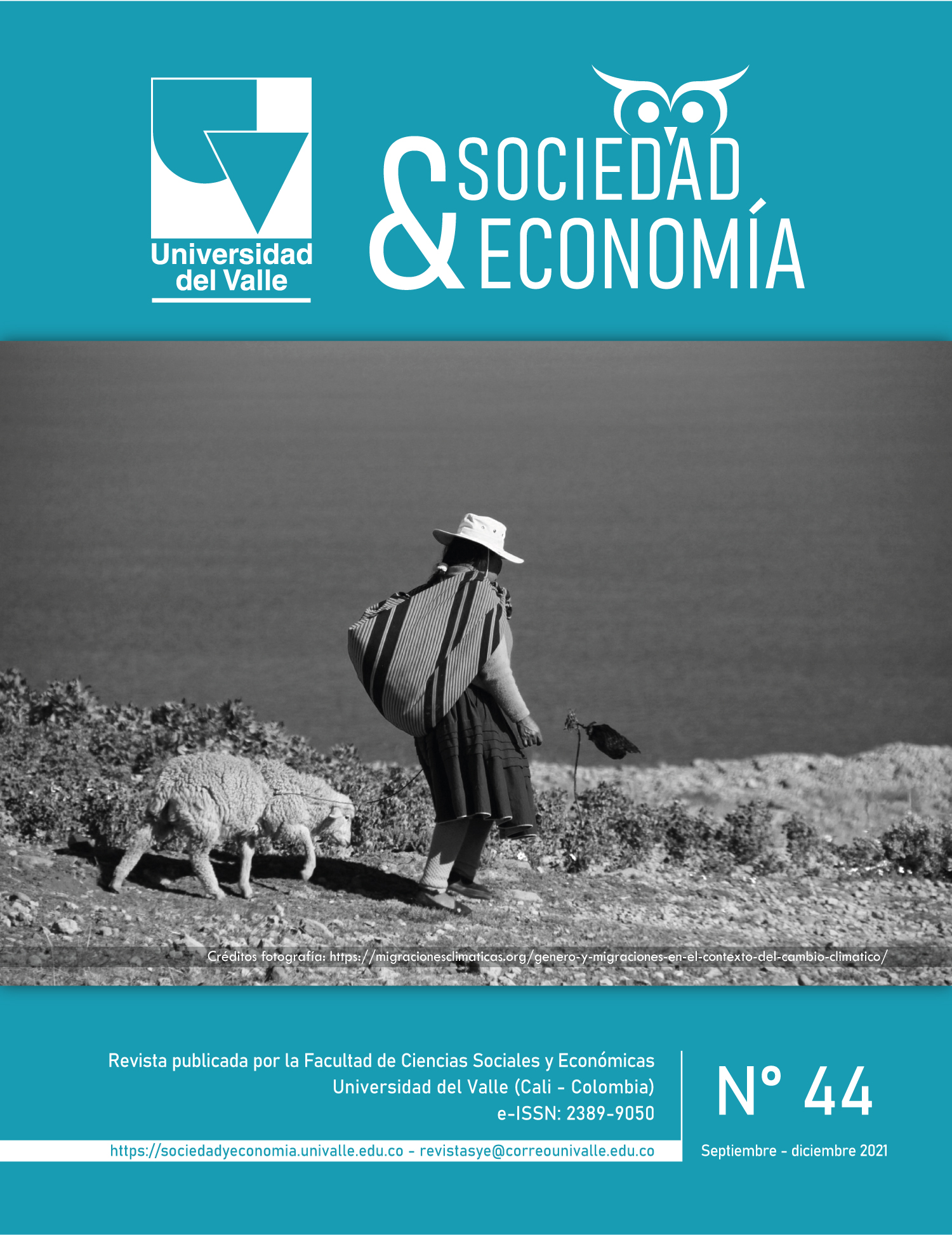Monopolistic Competition and Externalities in The Drug Crypto Market
Keywords:
crypto markets, illicit drugs, economics of crime, monopolistic competition, network externalitiesMain Article Content
The research purpose is to explain the functioning and dynamics of the crypto drug market. To that end, a model of monopolistic competition with network externalities was developed based on the works Belleflamme & Peitz (2010) and Dixit & Stiglitz (1977). The model’s main prediction is that interdiction policies in these markets tend to be counteracted by the entry of new sellers and the resulting opening of new websites in the dark web. A further finding is that, due to the presence of network externality effects in online drug use, the tightening of interdiction policies produces a feedback effect that leads to a greater number of effective consumers deciding to acquire the devices to access drug platforms on the dark web and, thus, to purchase illegal drugs.
Ballester, C., Calvó-Armengol, A. y Zenou, Y. (2006). Who's who in networks. Wanted: The key player. Econometrica, 74(5), 1403-1417. https://doi.org/10.1111/j.1468-0262.2006.00709.x
Ballester, C., Zenou, Y. y Calvó-Armengol, A. (2010). Delinquent networks. Journal of the European Economic Association, 8(1), 34-61. https://doi.org/10.1111/j.1542-4774.2010.tb00494.x
Belleflamme, P. y Peitz, M. (2010). Industrial organization: markets and strategies. Cambridge University Press.
Bergeron, A., Décary-Hétu, D. y Giommoni, L. (2020). Preliminary findings of the impact of COVID-19 on drugs crypto markets. International Journal of Drug Policy, 83, 102870. https://doi.org/10.1016/j. drugpo.2020.102870
CIDE. (2020). El nuevo mercado de las drogas en tiempos del COVID-19: ¿Qué cambios se pueden esperar? https://www.cide.edu/coronavirus/2020/05/19/el-nuevo-mercado-de-las-drogas-en-tiempos-del-covid- 19-que-cambios-se-pueden-esperar/
Décary-Hétu, D., Paquet-Clouston, M. y Aldridge, J. (2016). Going international? Risk taking by cryptomarket drug vendors. International Journal of Drug Policy, 35, 69-76. https://doi.org/10.1016/j. drugpo.2016.06.003
De-León, I. y Salcedo, E. (2014). El crimen como oficio. Ensayos sobre economía del crimen en Colombia. Universidad Externado de Colombia.
Dixit, A. K. y Stiglitz, J. E. (1977). Monopolistic competition and optimum product diversity. The American economic review, 67(3), 297-308. https://www.jstor.org/stable/1831401
Dolliver, D. S. (2015). Evaluating drug trafficking on the Tor Network: Silk Road 2, the sequel. International Journal of Drug Policy, 26(11), 1113-1123. https://doi.org/10.1016/j.drugpo.2015.01.008
Duncan, G. (2014). Más que plata o plomo. El poder político del narcotráfico en Colombia y México. Penguin Random House Grupo Editorial.
El Tiempo. (2018). Cómo operaba la red que vendía drogas en colegios por WhatsApp. https://www.eltiempo. com/justicia/delitos/como-operaba-la-banda-que-vendia-drogas-en-colegios-por-whatsapp-263774
EMCCDA –European Monitoring Centre for Drugs and Drug Addiction–. (2020). Special Report. COVID-19 AND DRUGS I Drug supply via darknet markets. https://www.emcdda.europa.eu/system/files/ publications/13042/EMCDDA-report_COVID19-darknet-final.pdf
García-Sigman, L. I. (2017). Narcotráfico en la Darkweb: los criptomercados. URVIO Revista Latinoamericana de Estudios de Seguridad, (21), 191-206. http://dx.doi.org/10.17141/urvio.21.2017.2824
Garoupa, N. (1997). The theory of optimal law enforcement. Journal of economic surveys, 11(3), 267-295. https://doi.org/10.1111/1467-6419.00034
Hardy, R. A. y Norgaard, J. R. (2015). Reputation in the Internet black market: an empirical and theoretical analysis of the Deep Web. Journal of Institutional Economics, 12(3), 515-539. https://doi.org/10.1017/ S1744137415000454
Heber, A. (2009). The Networks of Drug Offenders. Trends in Organized Crime, 12, 1-20. https://doi. org/10.1007/s12117-008-9055-8
Janetos, N. y Tilly, J. (2017). Reputation Dynamics in a Market for Illicit Drugs. Cornell University. https:// arxiv.org/pdf/1703.01937.pdf
Kruithof, K., Aldrige, J., Décary-Hétu, D., Sim, M., Dujso, E. y Hooners, S. (2016). Internet facilitated drug trade. An analysis of the size, scope and the role of the Netherlands. RAND.
Malm, A. y Bichler, G. (2011). Networks of Collaborating Criminals: Assessing the Structural Vulnerability of Drug Markets. Journal of research in crime and Delinquency, 48(2), 271-297. https://doi. org/10.1177/0022427810391535
Martin, J. (2014). Drugs on the dark net: How cryptomarkets are transforming the global trade in illicit drugs. Springer Verlag.
Polinsky, A. M. y Shavell, S. (2000). The economic theory of public enforcement of law. Journal of economic literature, 38(1), 45-76. https://doi.org/10.1257/jel.38.1.45
Raffo, L. (2016). Notas de clase curso Microeconomía II, Maestría en Economía Aplicada (documento inédito). Universidad del Valle.
Raffo, L. y Gómez, D. (2017). Redes criminales y corrupción en la era del microtráfico y el narcomenudeo. Revista de Economía Institucional, 19(37), 227-261. https://doi.org/10.18601/01245996.v19n37.12
Raffo, L. y Segura, J. L. (2015). Las redes del narcotráfico y sus interacciones: un modelo teórico. Revista de Economía Institucional, 17(32), 183-212. https://doi.org/10.18601/01245996.v17n32.06
Raffo-López, L. y Segura, J. L. (2018). La ineficacia de las políticas de represión a la oferta de drogas: una explicación alternativa. Ensayos de economía, 28(52), 165-201. https://doi.org/10.15446/ede. v28n52.71862
The Economist. (2016). Shedding light on the dark web. http://www.economist.com/news/ international/21702176-drug-trade-moving-street-online-cryptomarkets-forced-compete
Tirole, J. y Rochet, J. C. (2003). Platform competition in two-sided markets. Journal of the european economic association, 1(4), 990-1029. https://doi.org/10.1162/154247603322493212
Downloads

This work is licensed under a Creative Commons Attribution-NonCommercial 4.0 International License.
Revista sociedad y economía editada por la Facultad de Ciencias Sociales y Económicas de la Universidad del Valle se encuentra bajo una Licencia Internacional Creative Commons Atribución - No comercial 4.0
Basada en una obra en http://sociedadyeconomia.univalle.edu.co

